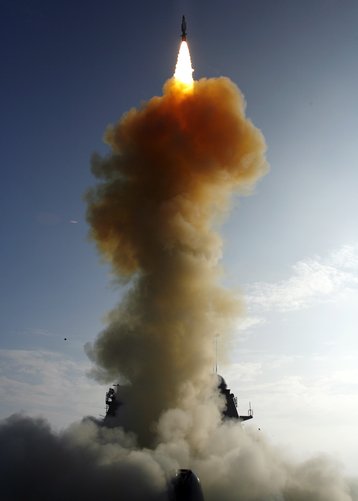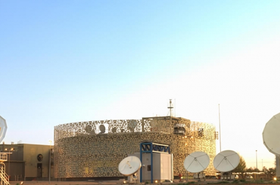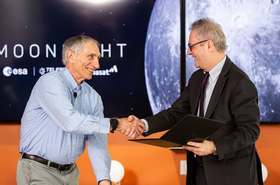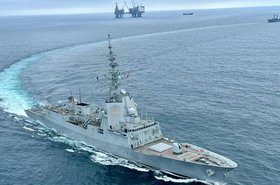A Russian satellite has been destroyed in a weapons test that has created a debris cloud with thousands of potentially destructive pieces.
The defunct Cosmos-1408 satellite was orbiting at an altitude of approximately 485 kilometers but seemingly broke up late Nov. 14 or early Nov. 15 Eastern time.
State Department spokesman Ned Price confirmed the satellite was destroyed by an anti-satellite weapon (ASAT).
Update: The Russian Military acknowledged the ASAT test: "On November 15, the Defense Ministry of Russia successfully conducted a test, in which the Russian defunct Tselina-D satellite in orbit since 1982 was struck," it said in a statement.
"The United States knows for certain that the emerging fragments at the time of the test and in terms of the orbit’s parameters did not and will not pose any threat to orbital stations, satellites and space activity," the ministry said.
“The Russian Federation recklessly conducted a destructive satellite test of a direct-ascent anti-satellite missile against one of its own satellites,” he said at a Nov. 15 State Department briefing. “The test has so far generated over 1,500 pieces of trackable orbital debris and hundreds of thousands of pieces of smaller orbital debris that now threaten the interests of all nations.
“Russia’s dangerous and irresponsible behavior jeopardizes the long-term sustainability of outer space and clearly demonstrates that Russia’s claims of opposing the weaponization of space are disingenuous and hypocritical.”
In the aftermath, the ISS crew were instructed to shelter in their Crew Dragon and Soyuz vehicles because of a “debris cloud,” remaining in their vehicles for about two hours.
“I’m outraged by this irresponsible and destabilizing action,” said NASA Administrator Bill Nelson in a statement. “With its long and storied history in human spaceflight, it is unthinkable that Russia would endanger not only the American and international partner astronauts on the ISS, but also their own cosmonauts.” The debris, he added, also threatens China’s space station.
“Russia’s dangerous and irresponsible behavior jeopardizes the long-term sustainability of outer space and clearly demonstrates that Russia’s claims of opposing the weaponization of space are disingenuous and hypocritical,” Price said.
Cosmos 1408 was a Soviet ELINT (Electronic and Signals Intelligence) satellite launched in 1982 and had a mass of 2,200kg. LeoLabs, which tracks space debris, reports that there are at least 100 pieces of trackable debris traveling along the poles at altitudes ranging from 440 to 520km. LeoLabs has since updated this figure to more than 200, and said it expects to be issuing collision alerts for many years to help satellite operators dodge the new debris field.
“Russia has demonstrated a deliberate disregard for the security, safety, stability, and long-term sustainability of the space domain for all nations,” Gen. James Dickinson, commander of US Space Command, said in a statement. “Russia’s tests of direct-ascent anti-satellite weapons clearly demonstrate that Russia continues to pursue counterspace weapon systems that undermine strategic stability and pose a threat to all nations.”
ASATs can take different forms but are often customized ballistic missiles launched either from planes or directly from a launchpad. Russia has been known to be developing new capabilities, including the direct-ascent PL-19 Nudol missile.







